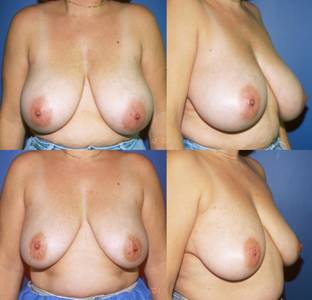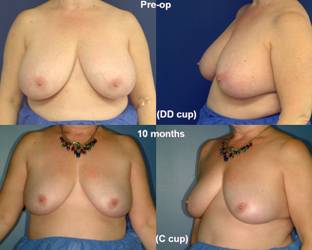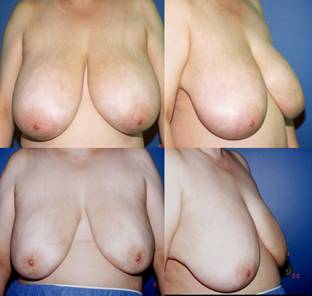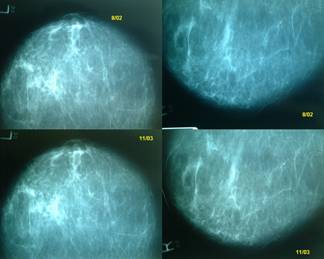Sunday, October 10, 2004
6150
UAL vs "Traditional" Breast Reduction: 37 Patients
|
| Age | | Pt Weight | Pt | Specimen Weight | |
| All | 36 |
| 80 kg |
| 977gr |
|
| Ultrasonic | 32 | 16-56 | 77 kg | 50-104.5 | 932gr | 275-2094 |
| “Traditional” | 39 | 18-68 | 83 kg | 52.7-127.3 | 1016gr | 359-2525 |
Ultrasound efficiency, as measured by grams of breast tissue per minute of ultrasound time, was 27 grams/minute in 1997. For patients treated in 2000 and after, efficiency increased to 175gr/minute. For UAL patients, nipple/notch measurements were reduced 2-10cm.
Symptom relief was comparable for open and ultrasonic techniques. Two UAL reduction patients successfully nursed children after surgery.
Except for transient peri-operative sensory changes, no peri-operative complications were experienced in either group.
Although breast ptosis persisted following UAL reduction, no patient requested mastopexy.
Conclusions: UAL breast reduction is equal to traditional open breast reduction for correcting symptoms related to breast size.
There appear to be two distinct patient populations: 1. Those who are wish breast lift as part of their reduction surgery (and are willing to accept the associated scars); and 2. Those who wish to relieve breast related symptoms, but who are unwilling to accept the scars of open breast reduction surgery. 
Fig. 1: Pre-op & 1 year post op; 800 gr reduction 
Fig. 2: Pre-op & 10 months: DD => C cup 
Fig. 3: 1300gr reduction; 9 minute UAL time 
Fig. 4: Pre & Post-op Mammorgram: No microcalcifications
